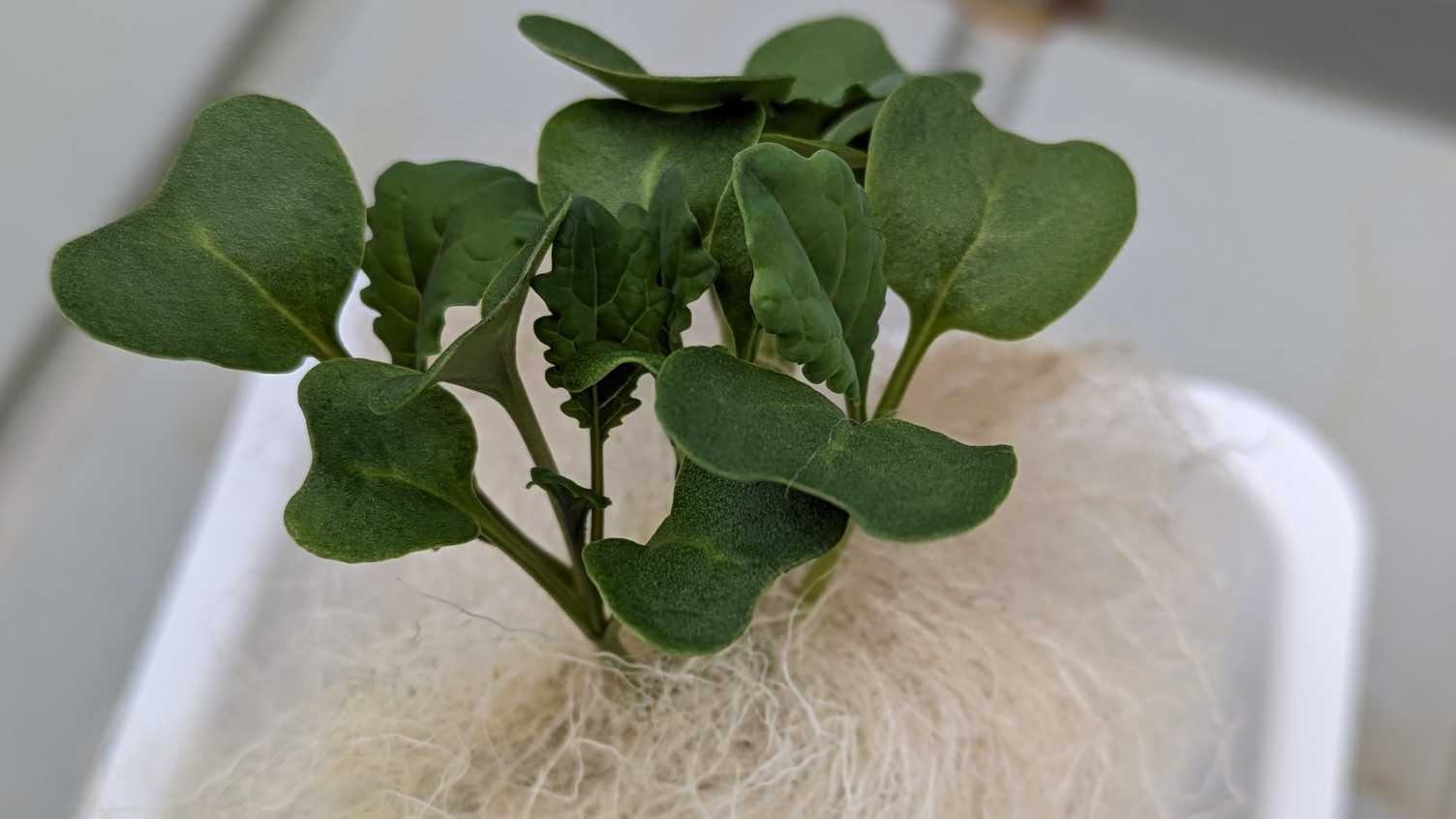There's a special kind of wonder that comes with seeing something truly new and unexpected on screen, particularly when it's an alien baby. People often ask, "Who is the new alien baby actor?" because these characters often steal the show, don't they? They capture our hearts, or maybe sometimes even make us a bit uncomfortable, with their unique looks and surprising actions. This question, you know, it gets at something really interesting about how movies and shows bring these amazing creatures to life.
It's a question that goes beyond just one person, or so it seems. When we see a tiny alien on screen, whether it's adorable or a little unsettling, we naturally wonder about the talent that makes it feel so real. Is it a person in a suit, a puppet, or something made with computers? The answer, quite often, is a mix of many clever things, actually. It's a testament to incredible artistry and technical skill.
So, if you're curious about the faces—or maybe the lack of faces—behind these captivating, often very, very strange, little beings, you're in the right place. We're going to explore what it really means to be the "actor" for an alien baby in today's visual stories. It's quite a journey into the imagination and the craft of filmmaking, to be honest.
- Sanders Bbq Supply Co
- Something In The Water 2024
- Green Meadows Farm Brooklyn
- Snohomish Valley Golf Center
- Ojai Valley Inn Ojai California
Table of Contents
- The Concept of the Alien Baby "Actor"
- Production Details of an Alien Baby Character
- The Art of Creature Design
- The Many Faces of the "Actor"
- The Performance Challenge
- Why We Love Alien Babies
- The Future of Alien Baby Portrayals
- Frequently Asked Questions About Alien Baby "Actors"
The Concept of the Alien Baby "Actor"
When someone asks, "Who is the new alien baby actor?", they're often thinking about a single person, a human performer, you know? But for these unique roles, the "actor" is very, very often not a person at all. It's more about a team of talented people working together to create something truly special. This idea of an "actor" for a non-human character has changed a lot over the years, too it's almost a story in itself.
The "actor" could be a skilled puppeteer, carefully moving a physical model to give it life. Or, it might be a group of computer artists, shaping digital pixels to form a creature that moves and feels real. Sometimes, it's even a combination of these things, blending old-school craft with the newest digital tricks. It’s quite fascinating how they pull it off, frankly.
So, the "biography" of an alien baby "actor" isn't really about a person's life story. Instead, it's about the creative journey of a character from concept art to a moving image on screen. It involves designers sketching, sculptors molding, technicians wiring, and artists painting, all to bring a tiny, otherworldly being into our viewing experience. It's a rather collaborative effort, usually.
- Uci Student Health Center
- Oak Park Des Moines
- Chappell Roan Album Cover
- Real Chance Of Love
- Jw Marriott Savannah Plant Riverside District
Production Details of an Alien Baby Character
To give you a better idea of what goes into making an alien baby character feel so real, here's a look at the typical "personal details" from a production standpoint. This isn't about a specific individual, but rather the collective effort and methods that define these roles, you know. It's a way to understand the "who" behind the "what" when it comes to these fascinating creations.
| Character Type | Fictional Alien Infant / Juvenile Creature |
| Primary "Acting" Method | Often a combination: Puppetry, Animatronics, Computer-Generated Imagery (CGI), or a live performer with enhancements. |
| Key Creative Team | Creature Designers, Sculptors, Fabricators, Puppeteers, VFX Artists (modelers, animators, texture artists, renderers), On-set Technicians, Directors, Performers (if applicable). |
| Typical Physical Attributes | Varies widely; often includes unique skin textures, multiple limbs, unusual eyes, or non-human anatomy. Size can range from very small to larger than a human infant. |
| Emotional Range Portrayed | Can be very expressive, showing curiosity, fear, joy, sadness, or even alien emotions, depending on the story. |
| Challenges in Portrayal | Achieving believable movement, realistic textures, conveying non-human expressions, and seamless integration with live-action elements. |
| Evolution Over Time | Moved from mostly practical effects (puppets, suits) to increasingly sophisticated digital methods and hybrid techniques. |
The Art of Creature Design
Before any "actor" or technique comes into play, there's the initial spark: the design. This is where the whole idea of an alien baby begins, really. It's a creative process that asks artists to imagine life forms that are both alien and, in some way, relatable, or at least understandable within the story. This initial stage is very, very important for the final look and feel of the character, too.
Conceptualizing the Unfamiliar
Designers start with a blank slate, or perhaps a rough idea from a script. They consider the alien's home planet, its biology, and its culture, if any. This helps them create a look that feels consistent and believable, even if it's completely made up. They sketch countless ideas, exploring different shapes, textures, and features. It's about finding that perfect balance between something truly otherworldly and something that can still evoke a response from us, you know, like curiosity or affection.
This phase often involves a lot of trial and error. Artists might try out various numbers of eyes, different skin patterns, or unusual limb structures. The goal is to make the alien baby unique, but also to ensure it fits the overall tone of the story. A scary alien baby will look very different from a cute one, for example. It's a bit like playing a visual game of "what if," actually.
Bringing Concepts to Life
Once a design is approved, it moves from two-dimensional sketches to three-dimensional models. This might mean sculpting with clay, or perhaps using digital sculpting software. These models help the team see the creature from all angles and figure out how it will move. It’s a pretty detailed process, to be honest.
During this stage, the practicalities of making the "actor" also come into focus. If it's a puppet, how will the puppeteers control it? If it's CGI, what kind of internal structure will it need to animate properly? These questions shape the physical or digital build of the alien baby. This careful planning ensures the final creation can "perform" as needed, very, very smoothly.
The Many Faces of the "Actor"
So, who is the new alien baby actor? As we've seen, it's rarely just one person. It's a whole array of techniques and skilled individuals. Let's look at the main ways these fascinating characters come to life on screen. Each method has its own strengths and its own kind of magic, you know, for bringing the character to life.
Puppetry: Hands-On Magic
For a long time, and still very much today, puppets have been a favorite way to portray alien babies. This involves creating a physical model, often quite detailed, and then manipulating it with rods, cables, or even directly with hands inside. Puppeteers are truly the "actors" here, breathing life into an inanimate object through their precise movements and timing. It's a very traditional method, but still incredibly effective, in some respects.
The beauty of puppetry is its tangible presence on set. The actors can interact with a physical object, which often helps their performance feel more natural. The lighting reacts to the puppet's real surface, too, creating very realistic shadows and reflections. However, it can be quite challenging to make complex movements or show a wide range of expressions with a puppet. Sometimes, you need multiple puppeteers just for one small creature, just a little bit of extra help.
Animatronics: Mechanical Wonders
Animatronics take puppetry a step further by adding internal mechanics, motors, and sometimes even hydraulics. These sophisticated puppets can perform more intricate movements, like blinking, opening mouths, or even subtle facial expressions. A team of technicians operates them remotely, often using joysticks or computer controls. This allows for a very high level of control and repeatability, as a matter of fact.
These creations can be incredibly lifelike, offering a physical presence that CGI sometimes struggles to match. They're especially good for close-up shots where texture and light interaction are key. However, animatronics are usually very expensive to build and maintain. They can also be quite heavy and delicate, which limits their movement and the environments they can be used in. It's a bit of a trade-off, you know.
Digital Creations: CGI's Role
Computer-Generated Imagery, or CGI, has changed the game for creating fantastical creatures, including alien babies. With CGI, artists build the creature entirely in a computer, sculpting it digitally, adding textures, and then animating it frame by frame. This method allows for virtually any kind of movement or design, no matter how complex or impossible in the real world. It's truly a flexible tool, obviously.
The "actor" here is the team of digital animators who bring the model to life. They might use motion capture data from a human performer, or they might animate it by hand. CGI offers incredible freedom, allowing alien babies to fly, stretch, or change shape in ways that practical effects cannot. The challenge, though, is making sure the digital creature looks and feels real when placed alongside live actors and real environments. Sometimes, it can look a little too perfect, you know, and not quite grounded.
Hybrid Approaches: Blending Techniques
More and more often, filmmakers use a hybrid approach, combining practical effects with CGI. For example, a physical puppet might be used for close-up shots where detailed textures are important. Then, for wider shots or complex actions, a CGI version of the same alien baby takes over. This blending allows filmmakers to get the best of both worlds, really.
This method can create incredibly convincing results. It gives the actors something tangible to interact with on set, while still allowing for the flexibility of digital effects in post-production. It's a very smart way to work, often, and it means the "actor" is truly a blend of human craft and digital wizardry. The seamless transition between practical and digital elements is key to making this work, of course.
The Human Touch: Real Performers
Sometimes, a real human performer is indeed the "actor" for an alien baby. This might involve a small actor, a child, or even an adult in a specialized suit or prosthetics. These performers bring a natural human quality to the character's movements and expressions that can be very hard to replicate otherwise. Their presence adds a certain something, you know, a raw authenticity.
Even when a real person is involved, there are often significant enhancements. This could mean extensive makeup, prosthetics to change their shape, or digital effects added later to alter their appearance further. The human performer provides the core "performance," while the effects team transforms them into the alien baby. It's a collaborative effort, basically, where the actor's skill is the foundation.
The Performance Challenge
No matter the method, making an alien baby "act" is a unique challenge. It's not just about making something look cool; it's about making it feel alive
- Yella Beezy Net Worth
- Biden Stage 9 Cancer
- Real Automovil Club De Espa%C3%B1a
- Ian Anderson Jethro Tull
- Jk By Chef King



Detail Author:
- Name : Mr. Gabe Fadel
- Username : janessa.jacobi
- Email : xosinski@harvey.com
- Birthdate : 1973-08-11
- Address : 285 Nat Garden Port Richieside, MO 62238-9092
- Phone : (909) 448-2164
- Company : Sipes, Schmidt and Wiza
- Job : Gaming Cage Worker
- Bio : Magni sit esse repellat alias pariatur. Id ducimus rerum dicta. Maxime dicta dolor dolores occaecati enim voluptatum consequatur. Explicabo nisi odio eum ad qui laboriosam.
Socials
facebook:
- url : https://facebook.com/goodwinj
- username : goodwinj
- bio : Ipsa facere voluptatem ipsa dolore voluptas aut facilis.
- followers : 2535
- following : 2217
tiktok:
- url : https://tiktok.com/@goodwinj
- username : goodwinj
- bio : Sunt dolorem aperiam odit quia eum quisquam sint.
- followers : 4909
- following : 2874

